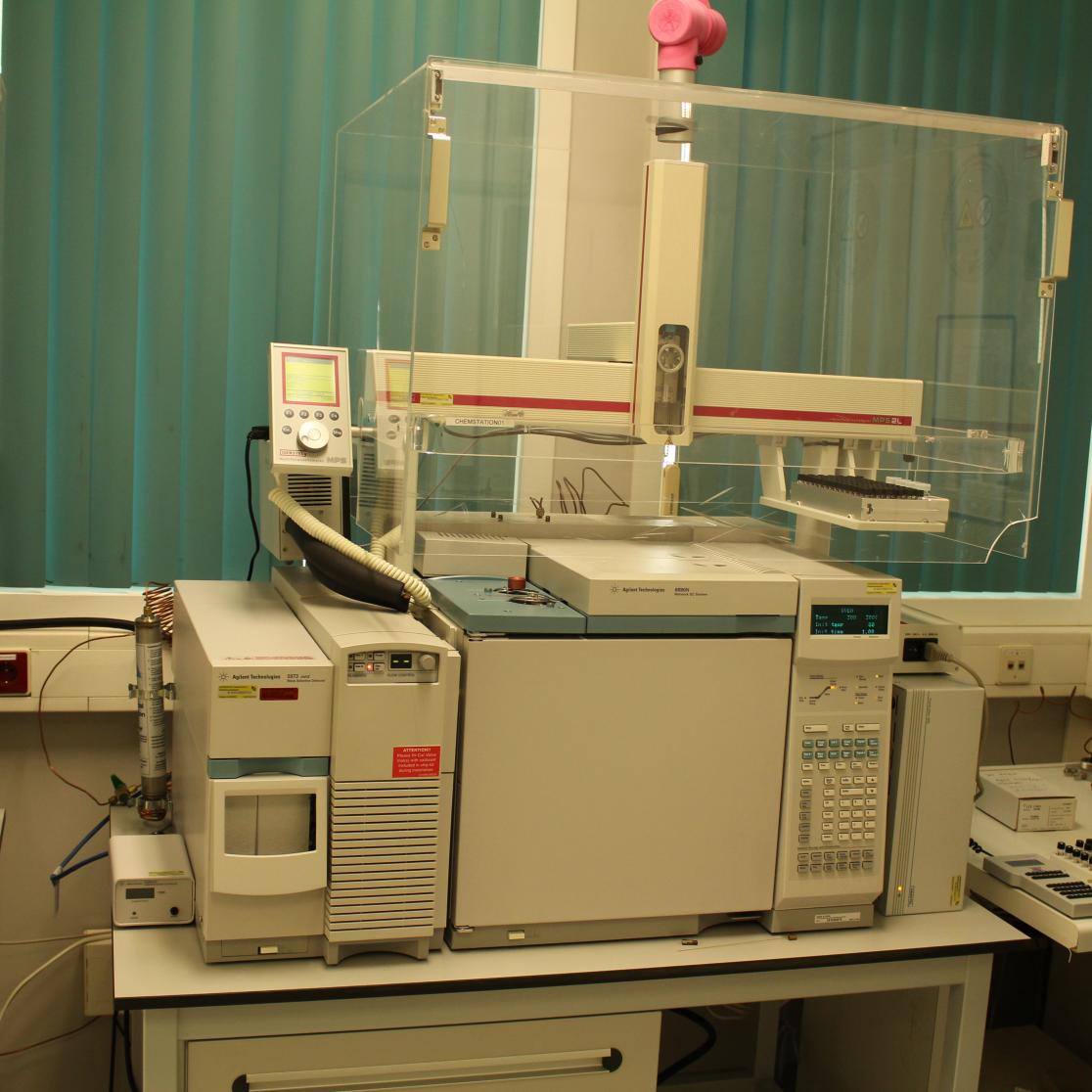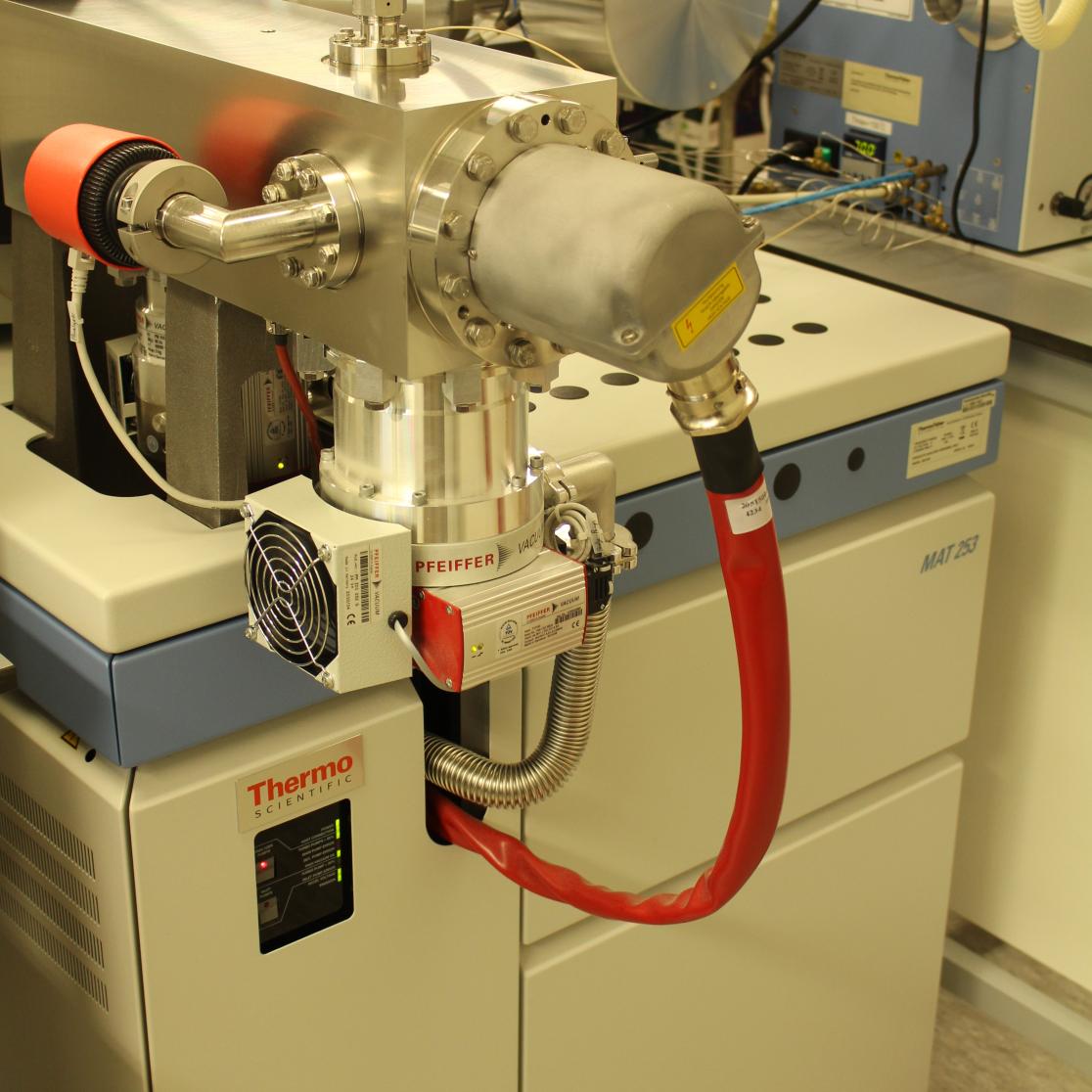Stable Isotope Methodology
Stable isotope tracers provide a safe and powerful tool to investigate carbohydrate, fat, and protein metabolism in vivo in humans. A stable isotope tracer is made by labelling a molecule (e.g., glucose, free fatty acid, or amino acids) with one or more atoms to make it distinct from the naturally occurring molecule (tracee) to allow its detection.
Carbohydrate metabolism
In a wide variety of metabolic studies, intravenous infusions and/or the ingestion of labelled glucose tracers are applied to determine the oxidation rate of plasma or gut derived glucose, respectively. It is possible to assess changes in the use of the different endogenous carbohydrate sources, for example, during exercise. Such information allows us to assess the impact of training status, exercise intensity and/or sports nutrition on skeletal muscle metabolism. Another application for this methodology is the use of a continuous glucose tracer infusion to study hepatic glucose output during pharmacological treatment of type 2 diabetes. Furthermore, many of our studies focus on modulating post prandial blood glucose homeostasis. With the combined use of intravenous infusions with labelled glucose and the ingestion of food products or ingredients with another glucose tracer, we are able to define effective nutritional interventions that improve postprandial blood glucose homeostasis.

Fat metabolism
In a wide variety of metabolic studies, continuous intravenous infusions of labelled fatty acids (predominantly palmitate) are applied to determine the appearance, disappearance and/or oxidation rate of plasma derived free fatty acids. As such, information on substrate utilisation and the regulation of muscle fuel selection can be obtained, for example, during exercise or inactivity.
Protein metabolism
Protein metabolism at the whole-body, muscle and organ levels in various physiological conditions is based on direct and indirect measurements of protein synthesis and breakdown, and on exchange rates of amino acids and amino acid tracers between tissues. In our lab, we have the expertise in the use of amino acid stable isotope methodology to study the effect of several exercise and nutritional interventions on whole-body and muscle protein turnover. This information can be used to define the most effective exercise and/or nutritional paradigm to offset losses of muscle mass that may occur during aging, inactivity and chronic metabolic disease-states.
Stable isotope analyses
The use of stable isotope methodology provides an excellent and safe means to investigate whole body substrate kinetics in vivo in humans, however, a large capital investment in technological instrumentation and substantial support facilities are needed for sample preparation, purification, and analysis. This support is provided by the Stable Isotope Research Centre (SIRC) in Maastricht that is located in the Academic Hospital in Maastricht. Due to the differences in molecular mass between the stable isotope tracer and its tracee, the relative abundance of tracer (tracer enrichment) can be measured by mass spectrometry (MS).
GC-MS (Agilent)
The GC/MS separates substrates with a gas chromatograph (GC). It then measures the masses of the substrates as they come off the gas chromatograph. The detection limit is relatively high: 0.5-1.0 atom % excess.
[1-13C]-Phe, [2H5]-Phe, L-[ring-13C6]-Phe, [1-13C]-Tyr, [2H2]-Tyr, [2H4]-Tyr [U-13-C]-glucose, [1-13C]-glucose, [2H2]-glucose, [1-13C]-palmitate, [2H2]--palmitate, [1-13C]-KIC and [2H5]-glycerol are measured in the SIRC.

GC-IRMS (Finnigan Mat 253)
IsotopeRatio Mass Spectrometry (IRMS) provides an extremely precise and accurate means to measure isotope ratios of D/H, 13C/12C, 15N/14N. It has a multi-collector and a fixed-magnetic-field .and is therefore ideally suited to measure enrichments close to natural abundance up to a TTR of 0.005 (0.5 atom % excess). In the peripherals of this IRMS we have an Elemental Analyser for combustion of solid samples, an automated injection system to measure breath samples and a gaschromatograph to measure liquid samples.
Samples for the gas chromatograph should be deproteinized, purified and derivatized before injection. After injection the compounds eluted from the chromatography column, combusted in a reactor into CO2, N2 and H2 and carried into the source under vacuum of the mass spectrometer. In the source the gas molecules are bombarded by a stream of electrons, whereby they acquire a positive charge and are accelerated into a magnetic field. As a consequence of differences in molecular mass the ions strike on differentl collector platesand generate currents that are proportional to their number and enable their quantification, which provides us with the isotope ratio (e.g. the 13CO2/12CO2 ratio).
The continuing advances in the technology and methodology used to determine stable isotope enrichments will further increase the applicability of stable isotope methodology in metabolic research. Increasing the precision and accuracy of mass spectrometry technology would decrease the present minimal requirements for tissue sample size and improve the potential to quantitate very low isotopic abundance in tissue samples collected from large body pools with a relatively low turnover rate. This would facilitate, for example, the quantification of lipolysis rates in abdominal adipose tissue, amino acid turnover in skeletal muscle tissue and could in the future even enable us to measure nucleic acid turnover, thereby initiating a whole new spectrum of applications for stable isotope tracer methodology.
